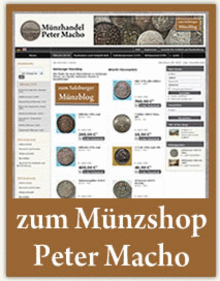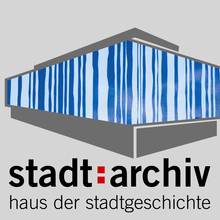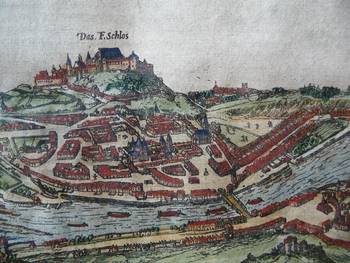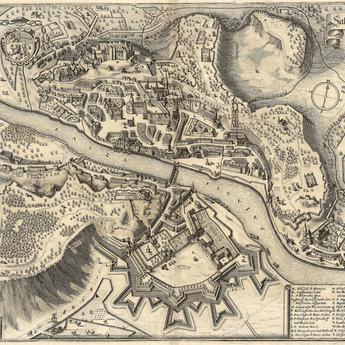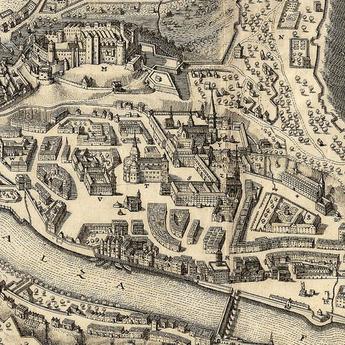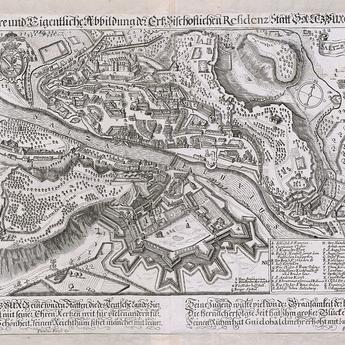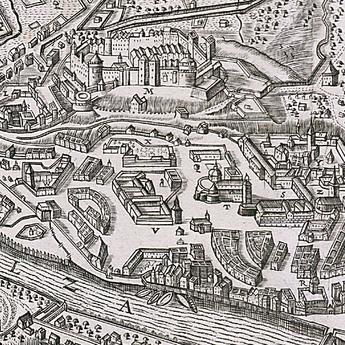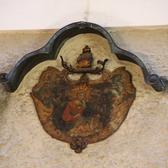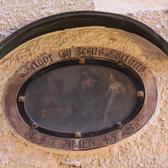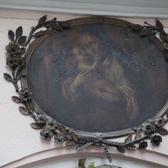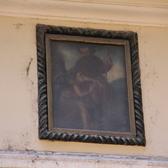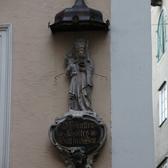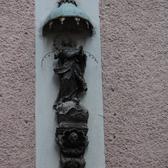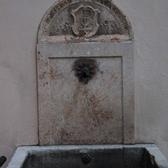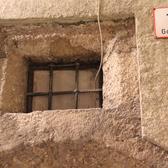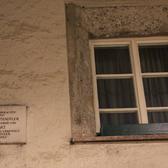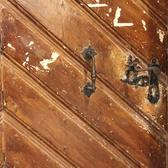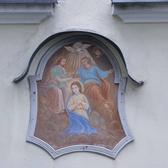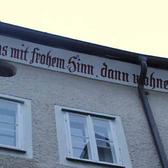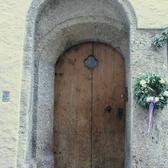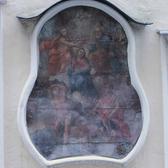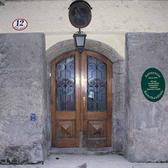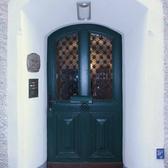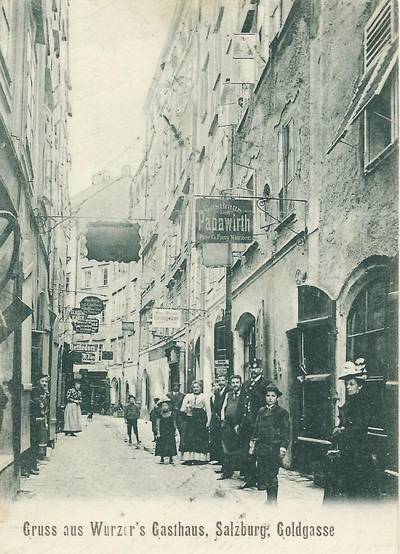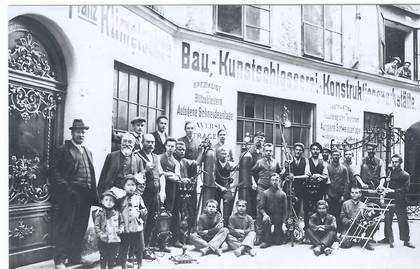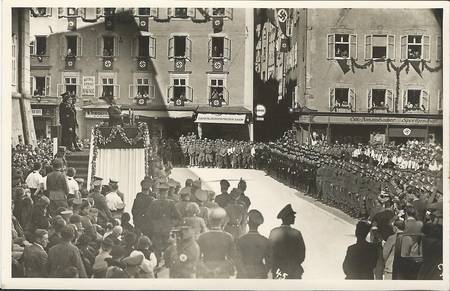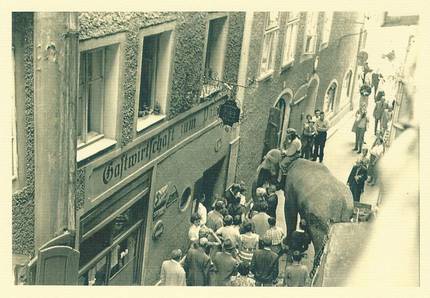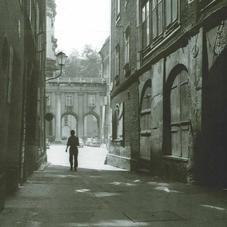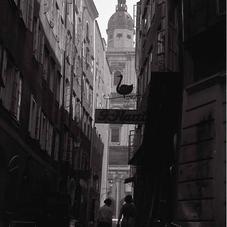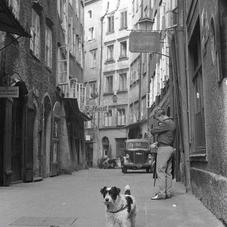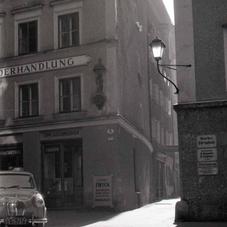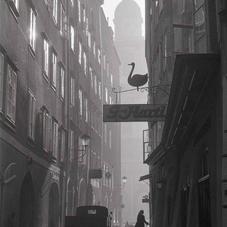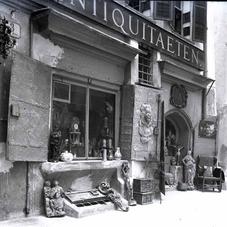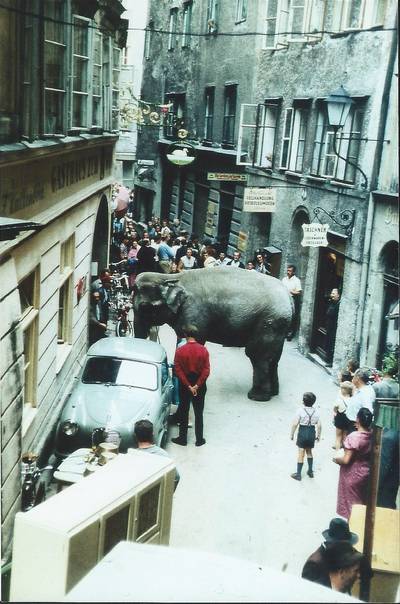A history of Goldgasse
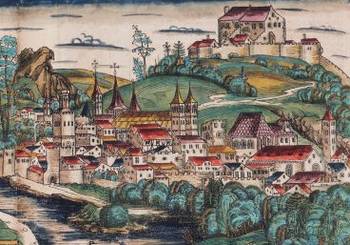
- Salzburg about 1460, Schedelsche Weltchronik
Goldgasse today still follows the same course the Romans already planned 2000 years ago, when Salzburg was Iuvavum, a formerly Celtic settlement integrated into the Roman Empire in the year 15. Even then, Goldgasse was a place of merchants and traders. Even though the city burned down as often as a dozen times during the Middle Ages, the essential run of the streets probably hasn’t changed much The oldest portrayal of Salzburg we have is from the year 1460 and can be seen in the famous Nuremberg Chronicle. All it shows are the rooftops of Goldgasse.
Goldgasse during the 17th century
After the Cathedral had been completed and the end of the 30 Years’ War, Salzburg had essentially become the city we know today. As an artful object, the city was to survive more than 350 years of toil and struggle until the Attack of the Real Estate Investors near the end of the previous century set in…
The Crafts of Goldgasse
Goldgasse has been a place for trade and craftsmanship in the Middle Ages, and it still is today. This becomes apparent when one looks at the old house names (the following names are hard to translate as they contain archaic denominations of different crafts, some of which don’t exist anymore.):
5 - Reitsamerhaus
6-8 - Hofgeigenmacher- bzw. Fragnerhaus und Melblerhaus
7 – Schnitlauer - oder Sporerhaus
9 – Hofbinderhaus
10 - ehem. Kupferschmidhaus, Gasthaus zur goldenen Ente
11 – Brucknerhaus
12 - Glockengießer- Schönsleben- oder Braumeisterhaus
14 – Drahtzieherhaus
15 – Spinnstätterhaus
16 – Glasererhaus
19 - Eckhaus am Aschhof, Zinngiesserhaus
Let’s explore two histories of two houses in more detail.
During the 17th and 18th centuries, Goldgasse 12, the Glockengießerhaus (bell founder house), Schönslebenhaus or Braumeisterhaus (brewer house), was home to bell founders Jakob Lidl, Benedikt Eisenberger as well as Johann Oberascher senior and junior. Benedikt Eisenberger made the bells for Nonnberg abbey and Erhardtskirche in Nonntal. Additionally, in 1702 he collaborated with the gunsmith Franz Sulzer on the actuator mechanism for the Glockenspiel, which has been producing its melodies at 7, 11 and 6 p.m. until the present day.
Goldgasse 19, formerly 47 at Aschhof, was first mentioned in documents from the year 1418. Seat of the tin moulders, it later acquired the name "Hofzinngiesserhaus". On the merit of its exposed position partly in Goldgasse, partly at Aschhof, this corner house attracted the interest of many Goldsmiths who, throughout the 16th century, used it as a living and working place. An important name in the history of this house is Anton Singer, who moved in in 1740 and commissioned the "Escape from Egypt" ornament next to the entrance.
Historical details of Goldgasse
Ancient places tend to surprise visitiors with a rich variety of intriguing details. Goldgasse confirms the rule. Take for example the green gates attached to many of the stores' entrances that were used in medieval times to prevent those unwelcome from entering the vaults after the owners had closed down. Or the old stone arcs made from Salzburg area psephite (during the four- and fifteenhundres the most popular building material among local masons.
Historical ornaments
[Translate to english:] 1910 - die Schlosserei Klimetschek
[Translate to english:] In der Goldgasse 9 und 11 (heute Schlüssel Aigner und Mares-Pelze)befand sich in der Kaiserzeit die Schlosserei Klimetschek. Der Gründer Franz Klimetschek sen. (geb. 1849) ist die 2. Person links neben der Haustür, direkt an der Tür sein Sohn Franz, der die Schlosserei bis zum 1. Weltkrieg führte und dann in russischer Kriegsgefangenschaft in Samarkand starb.
Göring and Goldgasse
[Translate to english:] Am 4. April 1938 machten sich die Nationalsozialisten und Reichsminister Göring vor der Goldgasse breit. Ziemlich genau 7 Jahre später gingen grosse Teile der Salzburger Altstadt und ganz Europa im Bombenhagel unter...
[Translate to english:] Der PAPAWIRT in der Goldgasse
[Translate to english:] Die Häuser Goldgasse 17 und 19 (heute Hotel am Dom und Geiger) in einer privaten Ansicht um 1950. Der Elefant steht vor dem PAPAWIRT, einem bei den Salzburgern beliebten Gasthaus das von der Kaiserzeit bis nach dem 2. Weltkrieg hier logierte.
[Translate to english:] Alte Ansichten aus dem Stadtarchiv Salzburg:
[Translate to english:] Wir danken dem Stadtarchiv Salzburg für Bilder der Goldgasse aus den 1940er und 1950er Jahren.Die Bilder sind Eigentum des Stadtarchivs, kopieren oder andere Verwendung ist nicht gestattet.
Bildnachweis:
Stadtarchiv Salzburg, Fotosammlung Johann Barth (JOBA)
Nr. 4435, 4439, 4544, 3888, 4411, alle Bilder Goldgasse im Jahr 1957
Stadtarchiv Salzburg, Fotoarchiv Würthle
Würthle, Swatek: Verkaufsladen der Antiquitätenhändlerin Anna Swatek, 1910 (Ecke Gold/Brodgasse)
Stadtarchiv Salzburg Fotosammlung
1204.0389: Gebäudeaufnahme um 1940
1206.0698: Foto von 1954
Goldgasse als beliebter Elefantentreff (va. 1955/60)
Auch nach dem Krieg hatte die Goldgasse Elefantenbesuch. Zu dieser Zeit gastierten Zirkusse noch im Altstadtzentrum.
Auf den Firmenschildern erkennt man einige alte Betriebe der Goldgasse:
TASCHNER U. LEDERWARENERZEUGER Gattinger (seit vor dem 2. WK.)
OTTO GÖSCHL FELLHANDLUNG UND PETROLEUMLAMPEN 2.STOCK (die Werkstatt und Verkauf existierten auch vor dem 2. WK.)
BRIEFMARKEN FRIEB (Spezialgeschäft für Philatelie bis ca. 1975)
BAU- UND KUNSTSCHLOSSEREI (bis heute; Schlüssel Aigner)
MUSIKINSTRUMENTE (Geigenbauer Bandzauner)
Die Möbel im Vordergrund stammen vom ALTWARENHÄNDLER und Trödler Strobl, der dann vom Schwiegersohn Gastager übernommen wurde und etwa bis 1970/75 existierte.
Die Fotos nahm Kommerzialrat Daghofer vom ersten Stock seiner Fleischhauerei in der Goldgasse 13 auf. Vor dem Krieg war hier auch der Gasthof ZUM GOLDENEN LAMM.


